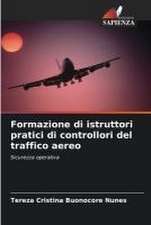The Lost Subways of North America: A Cartographic Guide to the Past, Present, and What Might Have Been
Autor Jake Bermanen Limba Engleză Hardback – 3 noi 2023
Every driver in North America shares one miserable, soul-sucking universal experience—being stuck in traffic. But things weren’t always like this. Why is it that the mass transit systems of most cities in the United States and Canada are now utterly inadequate?
The Lost Subways of North America offers a new way to consider this eternal question, with a strikingly visual—and fun—journey through past, present, and unbuilt urban transit. Using meticulous archival research, cartographer and artist Jake Berman has successfully plotted maps of old train networks covering twenty-three North American metropolises, ranging from New York City’s Civil War–era plan for a steam-powered subway under Fifth Avenue to the ultramodern automated Vancouver SkyTrain and the thousand-mile electric railway system of pre–World War II Los Angeles. He takes us through colorful maps of old, often forgotten streetcar lines, lost ideas for never-built transit, and modern rail systems—drawing us into the captivating transit histories of US and Canadian cities.
Berman combines vintage styling with modern printing technology to create a sweeping visual history of North American public transit and urban development. With more than one hundred original maps, accompanied by essays on each city’s urban development, this book presents a fascinating look at North American rapid transit systems.
Preț: 239.79 lei
Nou
Puncte Express: 360
Preț estimativ în valută:
45.89€ • 47.85$ • 38.14£
45.89€ • 47.85$ • 38.14£
Carte disponibilă
Livrare economică 28 februarie-14 martie
Preluare comenzi: 021 569.72.76
Specificații
ISBN-13: 9780226829791
ISBN-10: 0226829790
Pagini: 272
Ilustrații: 107 color plates
Dimensiuni: 216 x 279 x 25 mm
Greutate: 1.29 kg
Ediția:First Edition
Editura: University of Chicago Press
Colecția University of Chicago Press
ISBN-10: 0226829790
Pagini: 272
Ilustrații: 107 color plates
Dimensiuni: 216 x 279 x 25 mm
Greutate: 1.29 kg
Ediția:First Edition
Editura: University of Chicago Press
Colecția University of Chicago Press
Notă biografică
Jake Berman is a cartographer, writer, artist, and lawyer. His work has been featured in the New Yorker, Vice, Atlas Obscura, and the Guardian. A native of San Francisco, he now lives in New York City.
Extras
At 1:40 a.m., Sunday, June 19, 1955, the last regularly scheduled train of the Pacific Electric Railway left the Italianate, marble-floored Subway Terminal, 417 South Hill Street, Downtown Los Angeles. The Pacific Railway Society and the Electric Railroaders Association of Southern California held quiet ceremonies later that day, and the occasion came and went with little fanfare. The Los Angeles Times didn’t bother to send a reporter. The last train carried a banner that read “To Oblivion.”
The Pacific Electric had built the mile-long tunnel and its downtown terminal in the 1920s, at the then-enormous cost of $4 million, and it was believed that the subway would eventually form the basis of a regionwide rapid transit system. At the time, the Pacific Electric stood astride Southern California like a colossus, with over a thousand miles of electric rail service. And transportation wasn’t the only thing the Pacific Electric had its tentacles in—the Pacific Electric was also the largest real estate developer in Southern California. Towns kowtowed before the company to attract a station. One town, Pacific City, had even renamed itself Huntington Beach, after the Pacific Electric’s founder.
But by 1955, the once-mighty Pacific Electric was broke, and Los Angeles was going full speed ahead with the construction of its freeway system. The Pacific Electric had run out of cheap land to develop, the company hadn’t turned a profit in over 10 years, its trains were unreliable at best, and its infrastructure was decrepit. Making matters worse, the Pacific Electric’s Red Cars would get stuck in traffic behind the hordes of new motorists who jammed LA’s roads during the prosperous 1950s. The last Red Cars ran in 1961.
I originally became aware of this history because of Los Angeles’s infamous gridlock. A little over a decade ago, I was living in LA and was caught in an interminable traffic jam on the 101 Freeway. It was a hot summer day. The air conditioning in my car wasn’t working particularly well. I had been stopped behind some guy in a Jeep with too many bumper stickers for half an hour. Bored, frustrated, and questioning my decision to leave New York for Los Angeles, my mind began to wander. I asked aloud, to the empty car, “Why doesn’t LA have good public transit?”
Unable to figure out a good answer while stuck in traffic, I stopped by the LA Central Library a little while later. There, I stumbled on an ancient map of the Red Car system, showing a spiderweb of electric railway lines extending all across Southern California. In a corner of the map, a long-dead cartographer proudly printed, in all caps, “largest electric railway system in the world.”
The largest electric railway system in the world? In Los Angeles?
I had assumed that cars in Los Angeles were just a fact of life, like beaches, palm trees, and tacos. But that wasn’t the case at all. Gridlock was a choice that the people of Los Angeles had made.
Los Angeles was far from the only city to radically reshape itself for cars and freeways. Scenes like this repeated themselves across North America, as cities turned against public transportation and embraced the car after World War II. But not every city is the same, and the results in otherwise-similar cities were often dramatically different. Los Angeles would become the poster child for freeways, suburbs, and lousy traffic thanks in part to its experience with the Pacific Electric. In contrast, rival San Francisco opened a municipal streetcar company to challenge its privately owned streetcar monopoly. The city-owned Municipal Railway ultimately outcompeted the privately owned Market Street Railway and bought it out. San Francisco’s leaders were thus more receptive to public transit expansion during the freeway-mad 1950s and 1960s. Coupled with a grassroots revolt against urban freeways, the region built the Bay Area Rapid Transit subway system instead.
The Pacific Electric had built the mile-long tunnel and its downtown terminal in the 1920s, at the then-enormous cost of $4 million, and it was believed that the subway would eventually form the basis of a regionwide rapid transit system. At the time, the Pacific Electric stood astride Southern California like a colossus, with over a thousand miles of electric rail service. And transportation wasn’t the only thing the Pacific Electric had its tentacles in—the Pacific Electric was also the largest real estate developer in Southern California. Towns kowtowed before the company to attract a station. One town, Pacific City, had even renamed itself Huntington Beach, after the Pacific Electric’s founder.
But by 1955, the once-mighty Pacific Electric was broke, and Los Angeles was going full speed ahead with the construction of its freeway system. The Pacific Electric had run out of cheap land to develop, the company hadn’t turned a profit in over 10 years, its trains were unreliable at best, and its infrastructure was decrepit. Making matters worse, the Pacific Electric’s Red Cars would get stuck in traffic behind the hordes of new motorists who jammed LA’s roads during the prosperous 1950s. The last Red Cars ran in 1961.
I originally became aware of this history because of Los Angeles’s infamous gridlock. A little over a decade ago, I was living in LA and was caught in an interminable traffic jam on the 101 Freeway. It was a hot summer day. The air conditioning in my car wasn’t working particularly well. I had been stopped behind some guy in a Jeep with too many bumper stickers for half an hour. Bored, frustrated, and questioning my decision to leave New York for Los Angeles, my mind began to wander. I asked aloud, to the empty car, “Why doesn’t LA have good public transit?”
Unable to figure out a good answer while stuck in traffic, I stopped by the LA Central Library a little while later. There, I stumbled on an ancient map of the Red Car system, showing a spiderweb of electric railway lines extending all across Southern California. In a corner of the map, a long-dead cartographer proudly printed, in all caps, “largest electric railway system in the world.”
The largest electric railway system in the world? In Los Angeles?
I had assumed that cars in Los Angeles were just a fact of life, like beaches, palm trees, and tacos. But that wasn’t the case at all. Gridlock was a choice that the people of Los Angeles had made.
Los Angeles was far from the only city to radically reshape itself for cars and freeways. Scenes like this repeated themselves across North America, as cities turned against public transportation and embraced the car after World War II. But not every city is the same, and the results in otherwise-similar cities were often dramatically different. Los Angeles would become the poster child for freeways, suburbs, and lousy traffic thanks in part to its experience with the Pacific Electric. In contrast, rival San Francisco opened a municipal streetcar company to challenge its privately owned streetcar monopoly. The city-owned Municipal Railway ultimately outcompeted the privately owned Market Street Railway and bought it out. San Francisco’s leaders were thus more receptive to public transit expansion during the freeway-mad 1950s and 1960s. Coupled with a grassroots revolt against urban freeways, the region built the Bay Area Rapid Transit subway system instead.
Cuprins
Introduction
A Brief Primer on Transit and Urban Development
1 Atlanta: The City Too Busy to Hate
2 Boston: Urban Institutions, Megaprojects, and City Revival
3 Chicago: The Loop Elevated, Beloved Steel Eyesore
4 Cincinnati: A Short History of a Never-Used Subway
5 Cleveland: Transit and the Perils of Waterfront Redevelopment
6 Dallas: They Don’t Build Them Like They Used To
7 Detroit: The City-Suburban Rift and the Most Useless Transit System in the World
8 Houston: The City of Organic Growth
9 Los Angeles: 72 Suburbs in Search of a City
10 Miami: Overpromise, Underdeliver
11 Minneapolis–St. Paul: The Mob Takeover of Twin Cities Rapid Transit
12 Montreal: The Metro as Showcase Megaproject
13 New Orleans: How a Big City Grew into a Small Town
14 New York City: The Tortured History of the Second Avenue Subway
15 Philadelphia: How Not to Run a Railroad
16 Pittsburgh: How to Make Buses Work
17 Richmond: The First Streetcar System
18 Rochester: The Only City to Open a Subway, Then Close It
19 San Francisco: The View from Geary Street
20 Seattle: Consensus through Exhaustion
21 Toronto: Subway Line as Political Football
22 Vancouver: An Exceptional Elevated
23 Washington, DC: The Freeway Revolt and the Creation of Metro
Conclusion
Acknowledgments
Notes
Further Reading
List of Archives Used
Index
A Brief Primer on Transit and Urban Development
1 Atlanta: The City Too Busy to Hate
2 Boston: Urban Institutions, Megaprojects, and City Revival
3 Chicago: The Loop Elevated, Beloved Steel Eyesore
4 Cincinnati: A Short History of a Never-Used Subway
5 Cleveland: Transit and the Perils of Waterfront Redevelopment
6 Dallas: They Don’t Build Them Like They Used To
7 Detroit: The City-Suburban Rift and the Most Useless Transit System in the World
8 Houston: The City of Organic Growth
9 Los Angeles: 72 Suburbs in Search of a City
10 Miami: Overpromise, Underdeliver
11 Minneapolis–St. Paul: The Mob Takeover of Twin Cities Rapid Transit
12 Montreal: The Metro as Showcase Megaproject
13 New Orleans: How a Big City Grew into a Small Town
14 New York City: The Tortured History of the Second Avenue Subway
15 Philadelphia: How Not to Run a Railroad
16 Pittsburgh: How to Make Buses Work
17 Richmond: The First Streetcar System
18 Rochester: The Only City to Open a Subway, Then Close It
19 San Francisco: The View from Geary Street
20 Seattle: Consensus through Exhaustion
21 Toronto: Subway Line as Political Football
22 Vancouver: An Exceptional Elevated
23 Washington, DC: The Freeway Revolt and the Creation of Metro
Conclusion
Acknowledgments
Notes
Further Reading
List of Archives Used
Index
Recenzii
"Cartographer Berman’s comprehensive debut succinctly recounts the histories of 23 public mass transit systems built by American cities in the 20th century. . . . For each city, Berman provides his own exquisitely illustrated maps of past, existing, and proposed transit systems. The result is a valuable resource for transit enthusiasts."
“Effectively illustrated with past and current system maps, this collection offers fresh insights into how large cities can—or don’t—work.”
"In addition to commenting on contemporary situations, Berman’s book is also a rewarding look into the history that informs our contemporary transit mess. For instance, he does an apt job of retelling the oft-told defeat of Los Angeles’s streetcar system by freeway – including a strange moment in which an LA monorail almost took hold. This retelling makes for the perfect prologue to Berman’s discussion of LA’s decades-long pursuit of a viable light rail system, which continues to this day."
“If your daily life, too, is governed by the whims of your local subway, this book is for you. Cartographer Jake Berman uncovers the ghosts of bygone transit systems and incomplete transportation plans of 23 cities across North America. The maps appear alongside explanations of the systemic inequities that permanently altered the transportation systems we still use today. Also, you may finally get an answer as to why your subway is consistently 20 minutes late.”
"Using meticulous archival research, the cartographer and artist has successfully plotted maps of old train networks covering 23 North American metropolises."
"The Lost Subways of North America is all about the subways of our past, present and future. Not only will you find great stories about the subways of North America, it also features beautiful transit maps that Berman illustrated himself."
“Berman’s lively history of American subway debates takes us beyond the usual nostalgia of so much writing on the topic. It helps us to see how our ancestors’ values and motivations created the infrastructure we have and gives us the courage to make better choices now.”
“Berman’s comprehensive research and accessible writing style make for easy reading, and his complementary text greatly assists the reader in comprehending each locale’s unique situation. It is as much a critique of the rise and fall of industrial cities as it is a history of failed transit schemes, for which it should become recommended reading for anyone interested in the effects of unbridled capitalism, corrupt politics, and big egos on North American daily life.”
“Berman’s many exceptional maps are provocations worth thousands of words each, conveying a history of relative transportation abundance in the U.S. There is no other book on public transportation like it.”
“A comprehensive and accessible history of a profoundly consequential and underexplored cultural event. It makes you wonder at what was lost.”
“Berman takes us on a whirlwind cartographic and textual tour of urban rail transit’s lost lines and unbuilt extensions. Time and again, American voters and political leaders rejected or abandoned plans to create big, fast, bold transit systems that could compete with automobiles. While we can’t go back and change history, Berman provides a clear vision of just how much was lost.”























